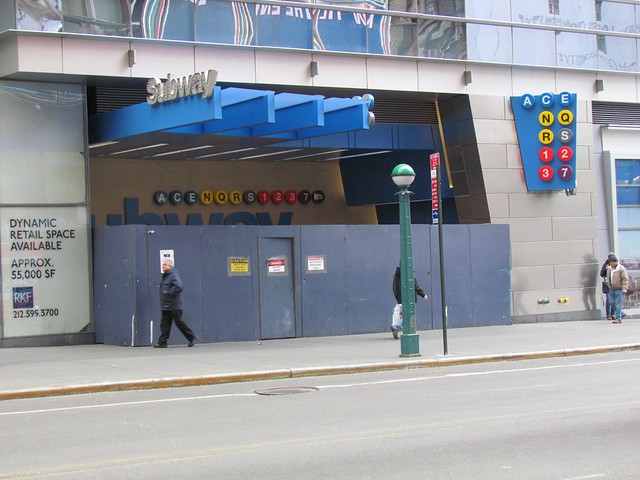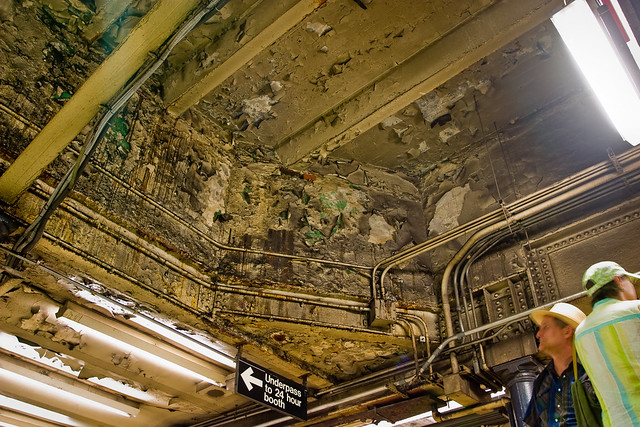What: A new subway entrance for the Times Square complex.
Where: The southeast corner of West 42nd St. and 8th Ave. on the ground level of the new 11 Times Square building.
Over the past few weeks, I’ve found myself at opposites ends of the block that spans from 7th to 8th Avenues on 42nd Street. Usually thronged with tourists, it’s not one of my favorite areas of the city, but as I got out of the subway last week at 7th Ave., I stared at the Times Square subway entrance. It used to have many bullets welcoming riders to the subway, but over the years, various letters and numbers have disappeared. The 9 train went first in the late 2005, and the W followed suit last June. Now, the bullets are bright white beacons of trains that no longer run.
A few days later, I had to go to the Port Authority area and happened upon the scene above. The developers at 11 Times Square had used the same bullet motif, but this time, they weren’t so static. It’s easy to remove and add train lines as they come and go from the subway landscape. The current map always seems static enough, but over the years, we’ve lost and gained some trains. Today, this entrance features 11 subway bullets. What will it have next year?



